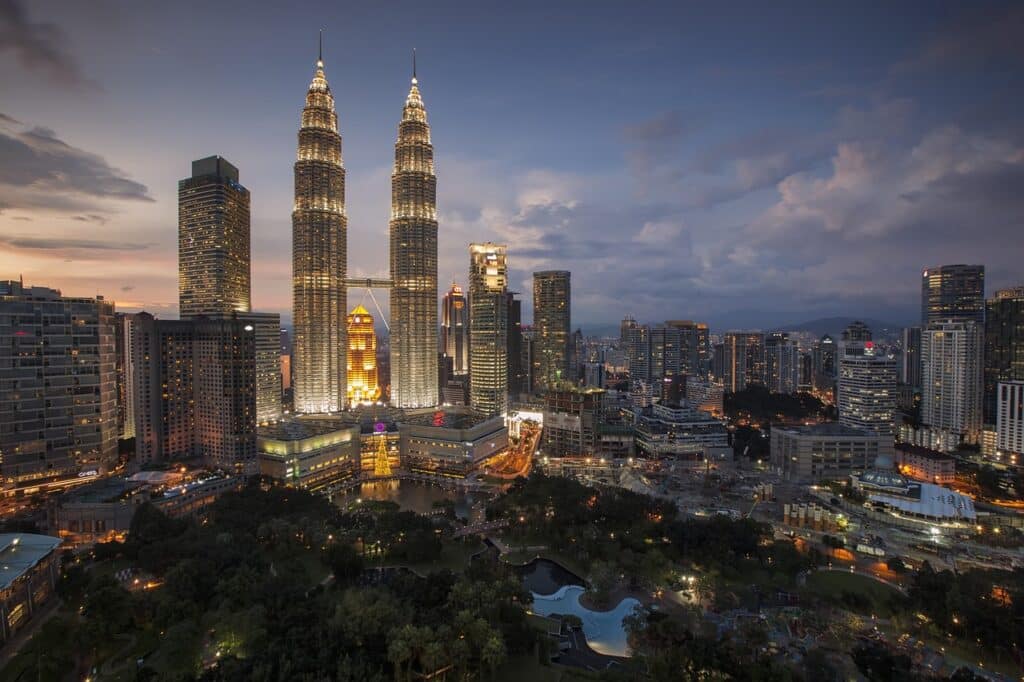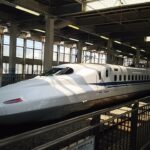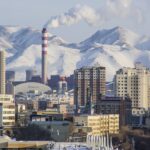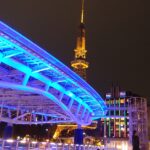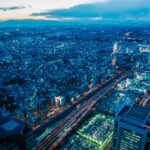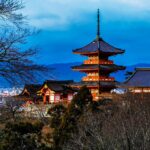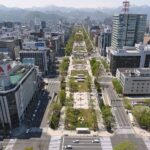Buses, metros, light rails, monorails, and taxis are just some of the public transportation choices available in Kuala Lumpur. The Rapid system is the most well-known, and it includes a web of light rail and metro lines. The lines cover a large area and make it easy to travel across the city. The bus system is a cheap and convenient way to get around the city, and buses operate often. Kuala Lumpur also has an abundance of taxis, which can be used to reach locations that are inaccessible by other modes of public transportation.
Metro: Basic information
Prasarana Malaysia owns the Rapid Rail and Rapid Bus systems, which are collectively referred to as Rapid KL. After the failure of STAR and PUTRA Light Rapid Transit operators—forerunners to the Ampang/Sri Petaling Lines and the Kelana Jaya Line, respectively—the federal government reorganized Kuala Lumpur’s public transportation systems to cover the entire city and the surrounding Klang Valley.
The lines of the Kuala Lumpur subway system
LRT lines in Klang Valley: the LRT Ampang and the LRT Sri Petaling
The integrated system was the first railway in Malaysia to employ standard-gauge track and semi-automated trains, and it consists of 45.1 kilometers of tracks serving 36 stations. The Ampang Line takes 41 minutes to go between the two stations, whereas the Sri Petaling Line takes 74 minutes. The Ampang Line gets its name from the station at its eastern end, while the former southern end of the Sri Petaling Line was also named for the station. Official rail maps designate the Ampang and Sri Petaling Lines (lines 3 and 4) as part of the Klang Valley Integrated Transit System and show them in orange and maroon, respectively.
LRT Kelana Jaya Line – Ruby
First completely automated and driverless rail system in the Klang Valley, Malaysia, is a medium-capacity light rapid transit (LRT) line. The line operates on grade-separated tracks for the whole, covering 46.4 kilometers and connecting 37 stations. The Kelana Jaya station was once the endpoint of the line, hence the name. Official transit maps will show the line as 5 and be colored ruby.
KL Monorail Line – light green
The KL Monorail is often cited as the most unsatisfactory rail line of the Klang Valley Integrated Transit System due to poor infrastructure planning and small rolling stock (to transport a large number of passengers in or out of the downtown Kuala Lumpur area during rush hour).
MRT Kajang Line (KG) – dark green
It follows the LRT Kelana Jaya Line as the second autonomous rail system in the Klang Valley. The Klang Valley Mass Rapid Transit Project by MRT Corp. has three MRT train lines, of which this is one. The first phase of service, between Sungai Buloh and Semantan, began on December 2016.
MRT Putrajaya Line (PYL) or MRT 2 – Yellow
The third fully automated and driverless rail system in Malaysia. The SSP Line is the new name for the MRT’s Sungai Buloh–Serdang–Putrajaya Line. Through Sri Damansara, Kepong, Batu, Jalan Ipoh, Sentul, Kampung Baru, Jalan Tun Razak, KLCC, Tun Razak Exchange, Kuchai Lama, Seri Kembangan, and Cyberjaya, the line travels from Kwasa Damansara to Putrajaya. The annexation of 5.5 kilometers from the MRT Kajang Line brings the total length of the line to 57.7 kilometers, making it the longest metro line in Malaysia. The route goes underground for a total of 13.5 kilometers. There are 37 stations in all, 11 of which are underground.
The BRT Sunway Line
Serves the southeast Petaling Jaya suburbs. This BRT system is the first of its kind to use only electric buses. Rapid Bus operates this line, which was established in 2015 to serve the densely populated areas of Sunway and Subang Jaya instead of the now-defunct Sunway Monorail extension. The BRT buses operate on a dedicated elevated guideway, apart from regular traffic below. Similar to rapid transit elevated trains, the BRT Sunway Line buses have their own dedicated and grade-separated guideway. However, only Rapid Bus is permitted to utilize it, and there is no ramp connecting regular streets with the elevated guideway. To reduce traffic, a large number of commuters use this closed system. Passengers can only use this system between the Setia Jaya and USJ7 terminals, a distance of 5.4 kilometers.
LRT Shah Alam Line (or LRT 3) – Blue
A medium-capacity light rapid transit (LRT) line, the LRT Shah Alam Line (or LRT 3) was formerly known as the LRT Bandar Utama-Klang Line, LRT Bandar Utama-Johan Setia Line, and the LRT Johan Setia Line. It will serve the Shah Alam and Klang areas on the western side of the Klang Valley in Malaysia. It will be the fourth autonomous rail system in the Klang Valley area, and the third LRT line. Rapid Rail, a division of Prasarana Malaysia, will manage the line as part of the RapidKL network. On April 24, 2013, Prasarana Malaysia made the announcement. When it’s done, the line will connect to the rest of the Klang Valley MRT. It is the first rapid transit line in the Klang Valley to run entirely outside the Federal Territory of Kuala Lumpur, and one of only four lines in the Klang Valley that does not serve KL Sentral (the others being the Ampang Line, the Sri Petaling Line, and the Putrajaya Line).
MRT Circle Line (MRT 3)
This line would be the third Mass Rapid Transit line and the fourth completely automated and driverless rail system in the region. The Klang Valley Integrated Transit System’s loop line will be constructed along this route after construction is complete. Number 13 will represent the circle line. As part of MRT Corp.’s Klang Valley Mass Rapid Transit Project, this line will be one of three MRT train lines serving the metropolitan area. By connecting the radial train lines, the MRT Circle Line will create a loop around Kuala Lumpur’s core business area. The first phase of construction is scheduled to begin in 2023 and be completed by 2030, with operations starting in 2028. Throughout the line’s 50.80 kilometers of track, 33 stations—26 elevated and 7 underground—will be constructed. From Bukit Kiara to PPUM, the circular line is planned to curve outward, passing through several highly populated neighborhoods on its way. These neighborhoods include Mont Kiara, Segambut, KL Metropolis, Titiwangsa, Setapak, Setiawangsa, Ampang, Salak South, Pandan Indah, Pantai Dalam, Cheras, and Universiti Malaya.
Map of Kuala Lumpur Metro 2024: Free Download in PDF
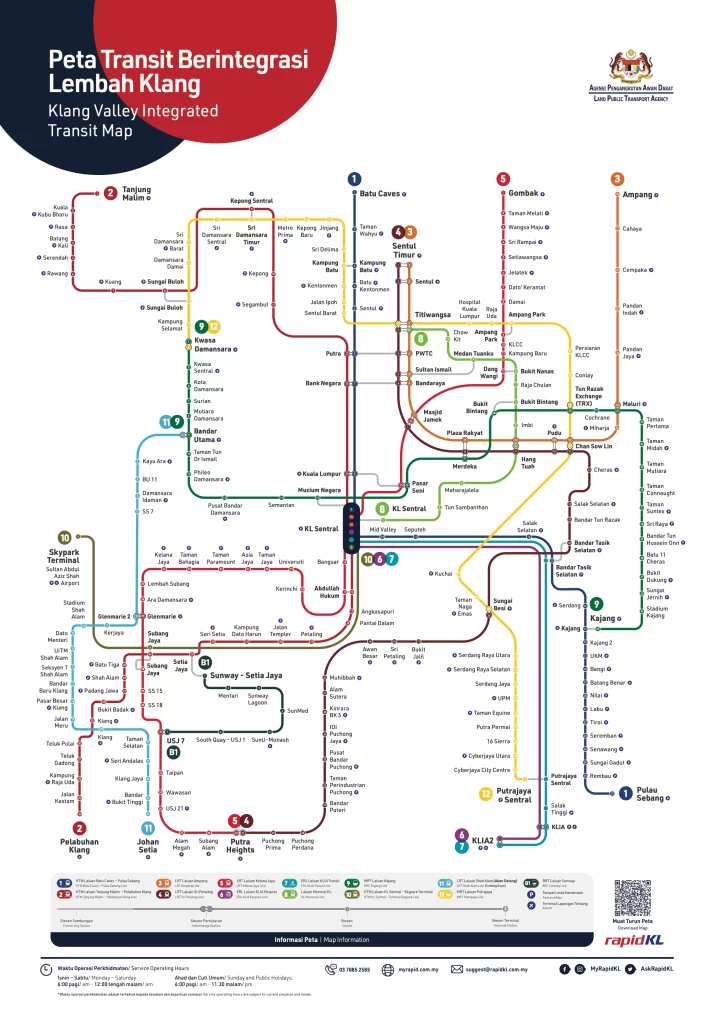
Click and download the map of Kuala Lumpur’s underground system for 2024
Anyone planning to visit or relocate to Kuala Lumpur in 2024 should carry a copy of the Kuala Lumpur Metro 2024 Map. Detailed information about the city’s subway system, such as its lines, stops, and connections, is all included. The map is free and can be downloaded in PDF format for your convenience. It’s perfect for city explorers, sightseers, and commuters alike. The Kuala Lumpur Metro 2024 Map is an invaluable tool for navigating the city’s extensive subway system.
Public transport tickets: best types for travelers & actual prices
The most common way to pay for transit in Malaysia is via a smart card called MyKad, which can be used on buses, LRTs, and KTM trains. Fares are distance-based and can be loaded into the MyKad in advance. The MyKad Tourist card is ideal for visitors to Kuala Lumpur because it allows unlimited rides on all forms of public transportation for three days. For just RM10, which is fully refundable, you can ride the LRT and select RapidKL buses as often as you like for three consecutive days.
Tokens and tickets, in addition to the MyKad Tourist card, can be purchased from ticket booths. Tokens for a single ride are priced differently depending on how far you go. There are stored-value tickets available for customers who anticipate making several trips.
In Kuala Lumpur, the MyKad monthly pass is available for stays longer than three days. For a low price, you may take advantage of a full month of unlimited rides on all public transportation options.
The MyKad Tourist card is the ideal option for visitors staying in Kuala Lumpur for three days. The RM10 refundable deposit is a tiny fee to pay for the freedom to travel to Kuala Lumpur’s public transportation system as often as you like.
Timetables & Schedules of Subway System
The Kuala Lumpur Metro runs continuously from 6:00 a.m. to 12:00 a.m., every day of the year. Trains run every five minutes during rush hours and every ten minutes during non-peak times. The weekend’s last train leaves at 1:00 a.m. An automated ticketing system and customer care desk are available at each stop. In addition, riders of the Kuala Lumpur Metro can use a dedicated mobile app to research routes, check times, and buy tickets.
What Are Other Options for Public Transportation?
Aside from the metro, various modes of transit are available. Travelers have a variety of options for getting around, including buses, taxis, monorails, and the KTM Komuter train. In addition, there are a plethora of ridesharing options, such as Uber and Grab. The Hop-On Hop-Off City Tour Bus is a fantastic way for visitors to get around the city. All of these modes of transportation are excellent options for moving around Kuala Lumpur because they are convenient, inexpensive, and secure.
public bus transportation: A, B and C categories
Kuala Lumpur, the country’s capital, has an extensive public bus network. The city’s bus system, which includes more than 300 lines, is both convenient and inexpensive. There are three primary categories of bus routes, labeled “A,” “B,” and “C.” The ‘A’ routes are the primary thoroughfares that link the city’s most popular landmarks and transportation nodes. The ‘B’ routes are the secondary roads that link the suburbs to downtown. Conversely, the ‘C’ lines connect Kuala Lumpur to smaller cities and towns around Malaysia.
The buses in Kuala Lumpur are modern, clean, and air-conditioned. Free Wi-Fi is available onboard at all times so that riders may maintain their online lives even when on the go. On-board computerized ticket vending devices make purchasing tickets a breeze for passengers.
In Kuala Lumpur, the ‘A’ roads are the most traveled. The A1, A2, A3, A4, A5, A6, A7, A8, A9, A10, A11, A12, A13, A14, A15, A16, A17, A18, A19, A20, and A21 are some of these lines. The Petronas Twin Towers, Parliament House, Kuala Lumpur City Centre, Central Market, and many more tourist hotspots are all within easy reach of these routes.
Kuala Lumpur also serves as a hub for various express bus companies that connect the city to other major cities in the region. There are three different kinds of Express Buses. Every one of these buses leaves from KLIA and travels to various locations in Malaysia, Singapore, and Thailand.
Kuala Lumpur International Airport (KUL) To The City Center With Public Transport
For both tourists and locals, getting from Kuala Lumpur International Airport (KLIA) to the heart of the city is a breeze. KLIA is one of the busiest airports in Southeast Asia, and it is conveniently located near the heart of Kuala Lumpur. Those who would prefer not to use a taxi can use one of the many public transportation choices available.
The Express Rail Link (ERL) is the fastest and most hassle-free option for traveling between KLIA and the heart of Kuala Lumpur. From KLIA, you can take the high-speed train to the city center and get off at the KL Sentral station. It takes about 28 minutes to get to KL Sentral from the airport, and trains leave every 15 minutes. Tickets can be purchased from a vending machine right outside the airport, and the ride itself is smooth and relaxing thanks to the air conditioning.
Alternatively, the Airport Coach provides service between the airport and downtown. This bus service connects the airport with KL Sentral, Bangsar, and Puduraya, three major city centers. The trip takes roughly an hour and a half on the buses, which depart every 20 minutes. Airport ticket counters and bus drivers both sell tickets.
The RapidKL bus service is an exciting option for people who would like a more scenic mode of transportation. There are buses that run every 20 minutes from the airport to various points in the downtown area. You can buy your ticket from the bus driver, and the trip will take around an hour.
To sum up, getting from Kuala Lumpur International Airport to the heart of the city can be done using several different modes of public transportation. Transportation options for tourists include the RapidKL bus service, the Airport Coach, the Express Rail Link, and taxis. No matter what you decide, you’ll have a fantastic trip.
3 days in Kuala Lumpur?
If you’re considering a vacation to Kuala Lumpur for the first time, you’ll want to maximize your time there by seeing as much as possible in the span of three days. Be sure to plan your trip around the best local eateries and the most interesting nightlife to have a truly unforgettable experience.
Take a tour of the city on your first day there. Explore the city’s many landmarks to get a feel for its layout and character. Do not miss out on seeing the world’s highest twin towers, the Petronas, Chinatown, and Merdeka Square’s colonial buildings.
Try a local eatery like the renowned Kuala Lumpur Roast Duck for lunch. A modern take on classic Malaysian fare is what this eatery is known for. Take a stroll through Kampung Baru, a traditional Malay village in the heart of the city, after lunch.
Explore the city’s exciting nightlife after dark. It’s a good idea to consult with the locals about the best bars and clubs in the area. Enjoy the city’s nightlife with some dancing, cocktail drinking, and sightseeing.
The next day, go outside of the city to the Batu Caves, a complex of Hindu temples and shrines. Visit the vibrant temples and underground caverns. Stop for lunch at a local favorite, the Jalan Alor Nasi Lemak, after visiting the Batu Caves. Here you may get contemporary takes on classic Malaysian fare.
Visit the city’s various markets after dark. You can get some truly one-of-a-kind keepsakes and presents at the Central Market, the city’s oldest and busiest market. Visit the vibrant Bukit Bintang district for dinner after perusing the market. You can sample some of the city’s finest cuisine at one of the many excellent restaurants that call this neighborhood home.
On your third day in KL, visit the Aquaria KLCC, the largest aquarium in the world. More than five thousand species of marine life, including as sharks, stingrays, and sea turtles, can be observed here. Visit the beautiful Istana Negara, the royal palace of the Malaysian monarchy, after your trip to the aquarium.
Visit one of the city’s many nightclubs or pubs once the sun goes down. Live music venues abound, and visitors can discover venues catering to a wide variety of musical preferences. If you’re hungry late at night after a night out, Chinatown is the place to go. Dishes like char kway teow and roti canai, two of the city’s most popular street foods, can be found in abundance here.
Kuala Lumpur is a city rich in diverse and fascinating activities. You may have a fantastic time in the city over three days if you plan.
other metro systems near Kuala Lumpur
There are numerous other cities close to the Malaysian capital of Kuala Lumpur, many of which have metro systems. The most famous ones are: Jakarta MRT, SMRT – Singapore MRT, Bangkok MRT, Ho Chi Minh – HCMC metro and Manila Metro.
VIDEO ABOUT PUBLIC TRANSPORTATION IN Kuala Lumpur
Summary of our tour guide for Kuala Lumpur
For the past five years that I’ve been based in Kuala Lumpur, I’ve relied significantly on the city’s excellent public transit system. The buses, light rail, and monorail systems in Kuala Lumpur are all quite dependable and help me get where I need to go quickly and easily. Cost-effectiveness and dependability of service are guaranteed. When I’m in a rush or otherwise time-pressed, I’ve found that the city’s cabs are both cheap and easy to use. Since moving to Kuala Lumpur, I have relied heavily on the city’s public transit system, for which I am eternally grateful.
Top 5 FAQs and answers about Kuala Lumpur public transport?
Where can I find information about Kuala Lumpur’s public transportation options?
- Multiple forms of public transportation are available in Kuala Lumpur. RapidKL buses are the most frequently used form of public transportation and run throughout the city and its surrounding areas. RapidKL’s LRT and Monorail are also widely used, as they provide service to much of the city. Taxis are another practical choice; the city is dotted with taxi stands equipped with meters.
What is the cost of using Kuala Lumpur’s public transportation system?
- Kuala Lumpur’s public transportation costs are not uniform among modes. Fares on the RapidKL bus service, for example, start at just RM2. Fares on the RapidKL LRT and Monorail start at just RM3 one way. Fares in a taxi start at RM5, which is significantly higher than the average.
I was wondering if there were any deals on Kuala Lumpur’s public transportation that I could take advantage of.
- Discounts on Kuala Lumpur’s public transportation are available, yes. Discounts are available for students, seniors, and those with impairments on the RapidKL bus service. Children and seniors can ride the RapidKL LRT and Monorail for half price.
Where can I find travel planning information on the internet?
- You may find a wealth of information to assist you in making preparations for your trip on the internet. Bus, LRT, and Monorail routes, as well as fare information, may all be found on the interactive map provided by RapidKL’s website. You may also get real-time updates on bus and train arrivals with the MyRapid app.
Can I safely use the Kuala Lumpur public transportation system?
- Taking the bus, train, or subway in Kuala Lumpur is relatively safe. You may feel safe using RapidKL’s bus service, LRT, or Monorail. The MyTeksi taxi app is another risk-free transportation choice. Public transportation in Kuala Lumpur is generally safe and reliable, yet it is vital to be cautious and aware of your surroundings at all times.
Useful links

